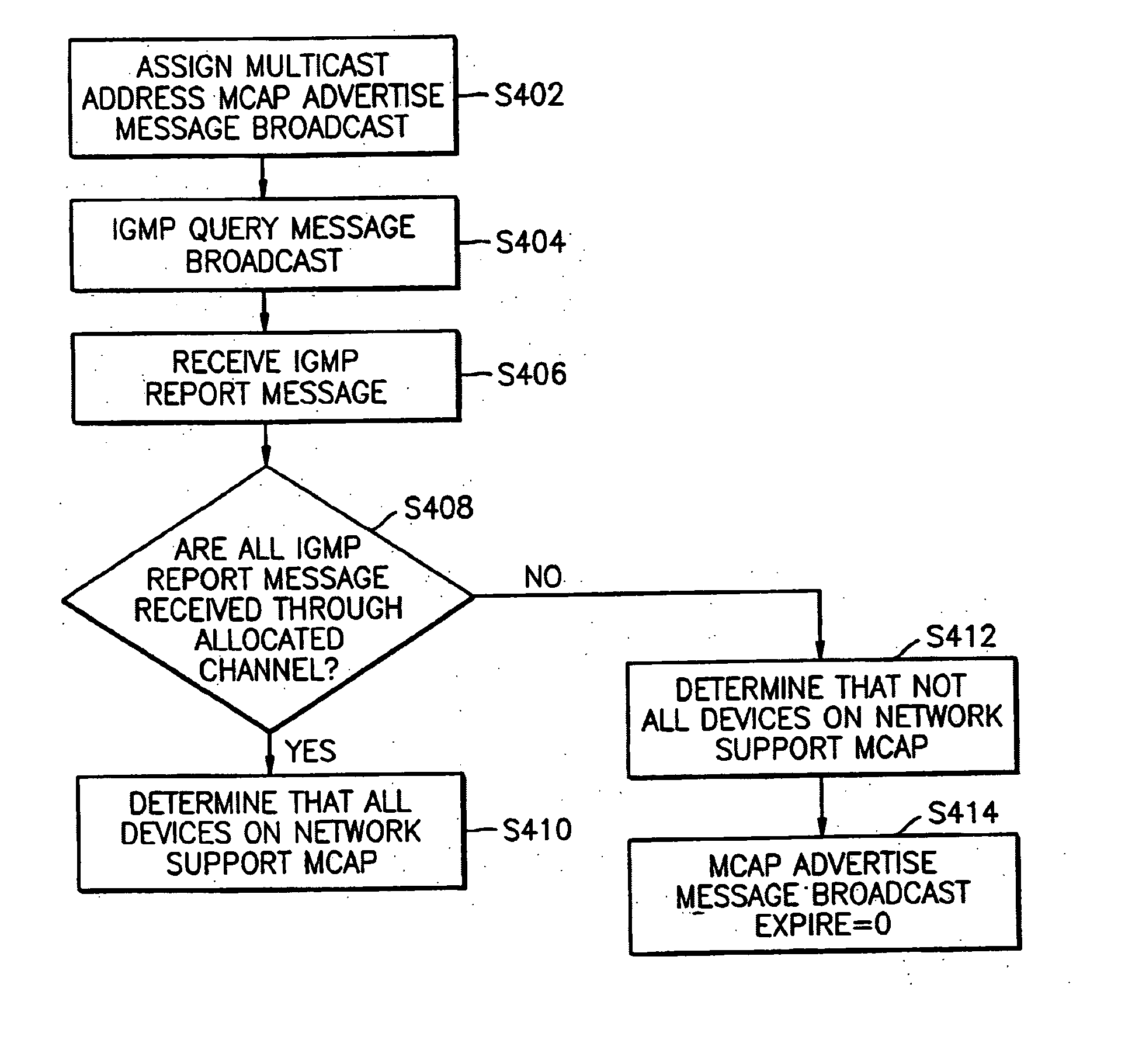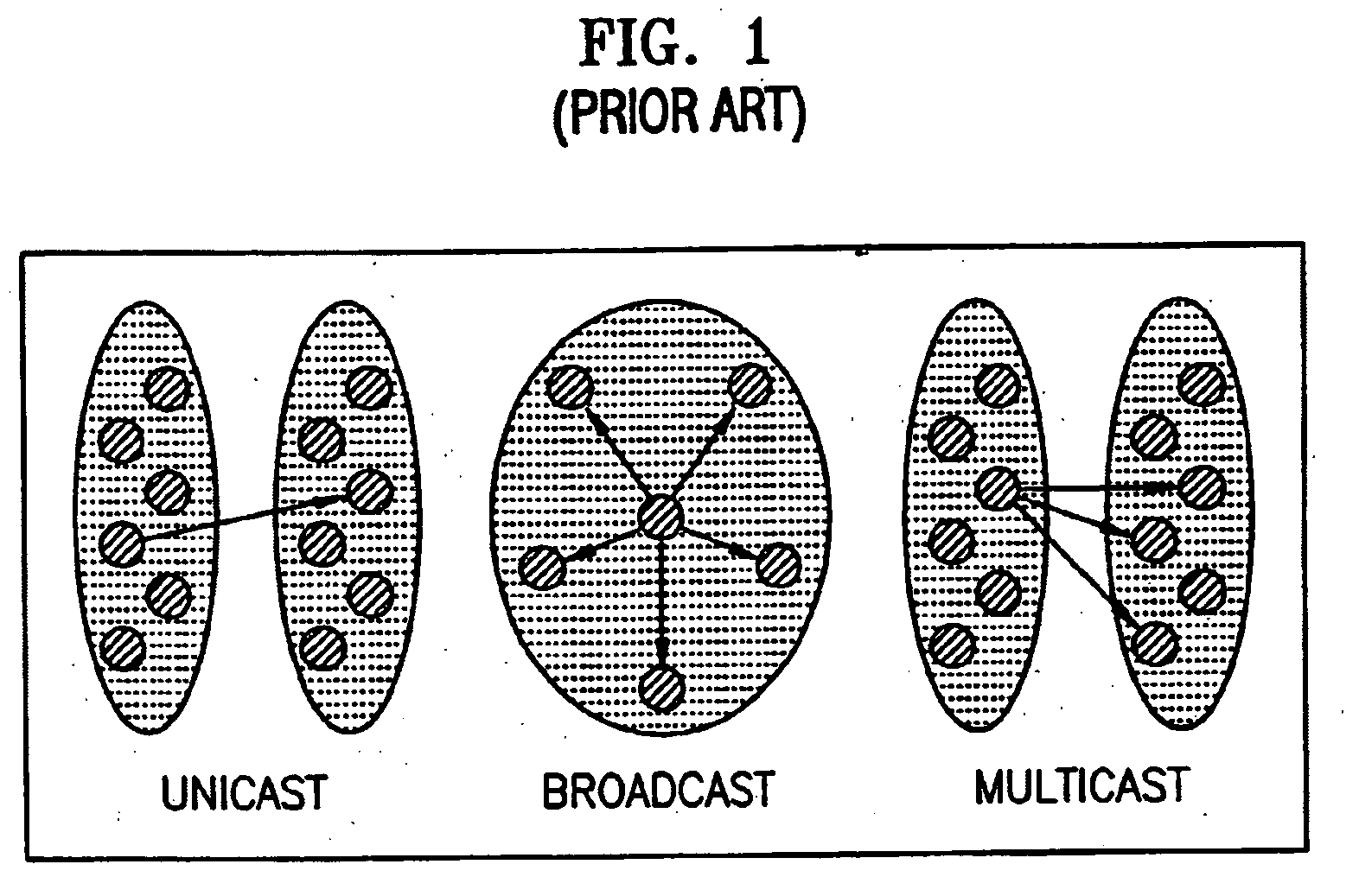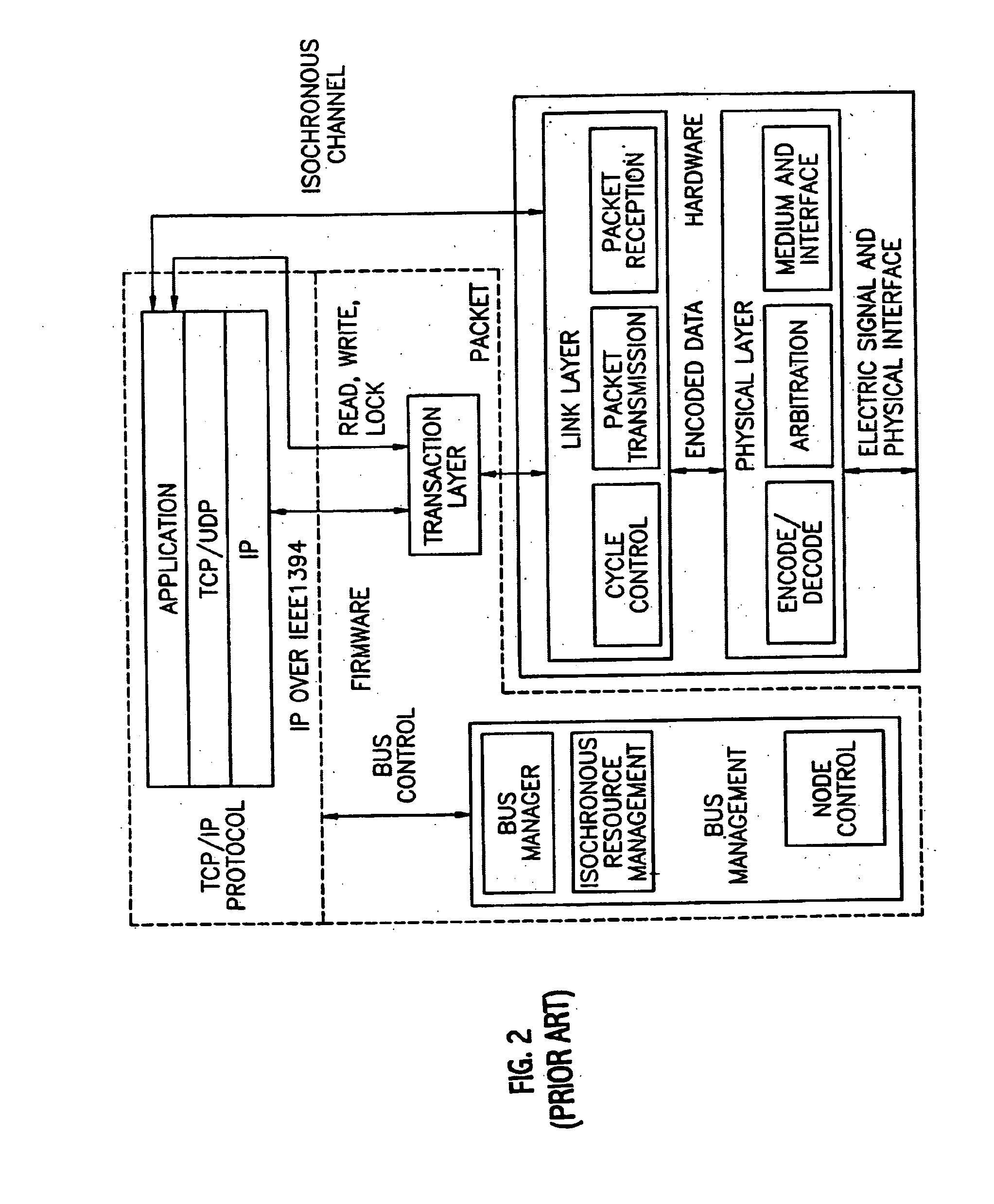Method and apparatus for identifying devices supporting multicast channel allocation protocol (MCAP) on the same network and multicast communication method using the same
a multicast channel allocation and multicast communication technology, applied in the field of methods and apparatus for identifying devices supporting multicast channel allocation protocol (mcap) on the same network and multicast communication method using the same, can solve the problems of unnecessarily using broadcast methods, unable to use selective transmission functions, and nullifying mcap functions. the core function of multicast communication
- Summary
- Abstract
- Description
- Claims
- Application Information
AI Technical Summary
Benefits of technology
Problems solved by technology
Method used
Image
Examples
Embodiment Construction
[0055] Reference will now be made in detail to the embodiments of the present invention, examples of which are illustrated in the accompanying drawings, wherein like reference numerals refer to like elements throughout.
[0056] Internet transmission methods can be divided into unicast, broadcast, and multicast methods from the viewpoint of source and destination.
[0057] In the present invention, by determining through an Internet Group Management Protocol (IGMP) query / report message whether non-Multicast Channel Allocation Protocol (MCAP) devices are on the same network, only when non-MCAP devices exist, MCAP devices use a broadcast channel, and if all devices support the MCAP, the MCAP protocol is used for multicast transmission.
[0058] By doing so, calculation loads caused by unnecessarily using broadcast channels, even when all devices belonging to a multicast group on the IEEE1394 network support the MCAP scan can be prevented. Also, even when non-MCAP devices are in the multicas...
PUM
 Login to View More
Login to View More Abstract
Description
Claims
Application Information
 Login to View More
Login to View More - R&D
- Intellectual Property
- Life Sciences
- Materials
- Tech Scout
- Unparalleled Data Quality
- Higher Quality Content
- 60% Fewer Hallucinations
Browse by: Latest US Patents, China's latest patents, Technical Efficacy Thesaurus, Application Domain, Technology Topic, Popular Technical Reports.
© 2025 PatSnap. All rights reserved.Legal|Privacy policy|Modern Slavery Act Transparency Statement|Sitemap|About US| Contact US: help@patsnap.com



